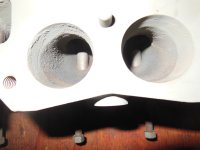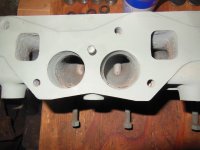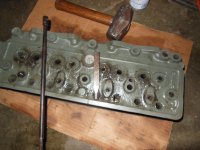Rebuilding a cylinder head. I am working on a head that I bought off Craigslist many years ago and have had it under my work bench since. The guy was cool, and said he had the head checked for cracks at a shop and I think he said new valve guides. He only charged me 50.00 bucks.
I took some pictures to see if people thought the valve guides look new. Can I get some opinions of the conditions of the guides by these pictures or would a different angle of picture be better? I have never rebuilt a head before so any ideas are very welcome
Thanks steve
I took some pictures to see if people thought the valve guides look new. Can I get some opinions of the conditions of the guides by these pictures or would a different angle of picture be better? I have never rebuilt a head before so any ideas are very welcome
Thanks steve

 Hi Guest!
Hi Guest!

 smilie in place of the real @
smilie in place of the real @
 Pretty Please - add it to our Events forum(s) and add to the calendar! >>
Pretty Please - add it to our Events forum(s) and add to the calendar! >> 



